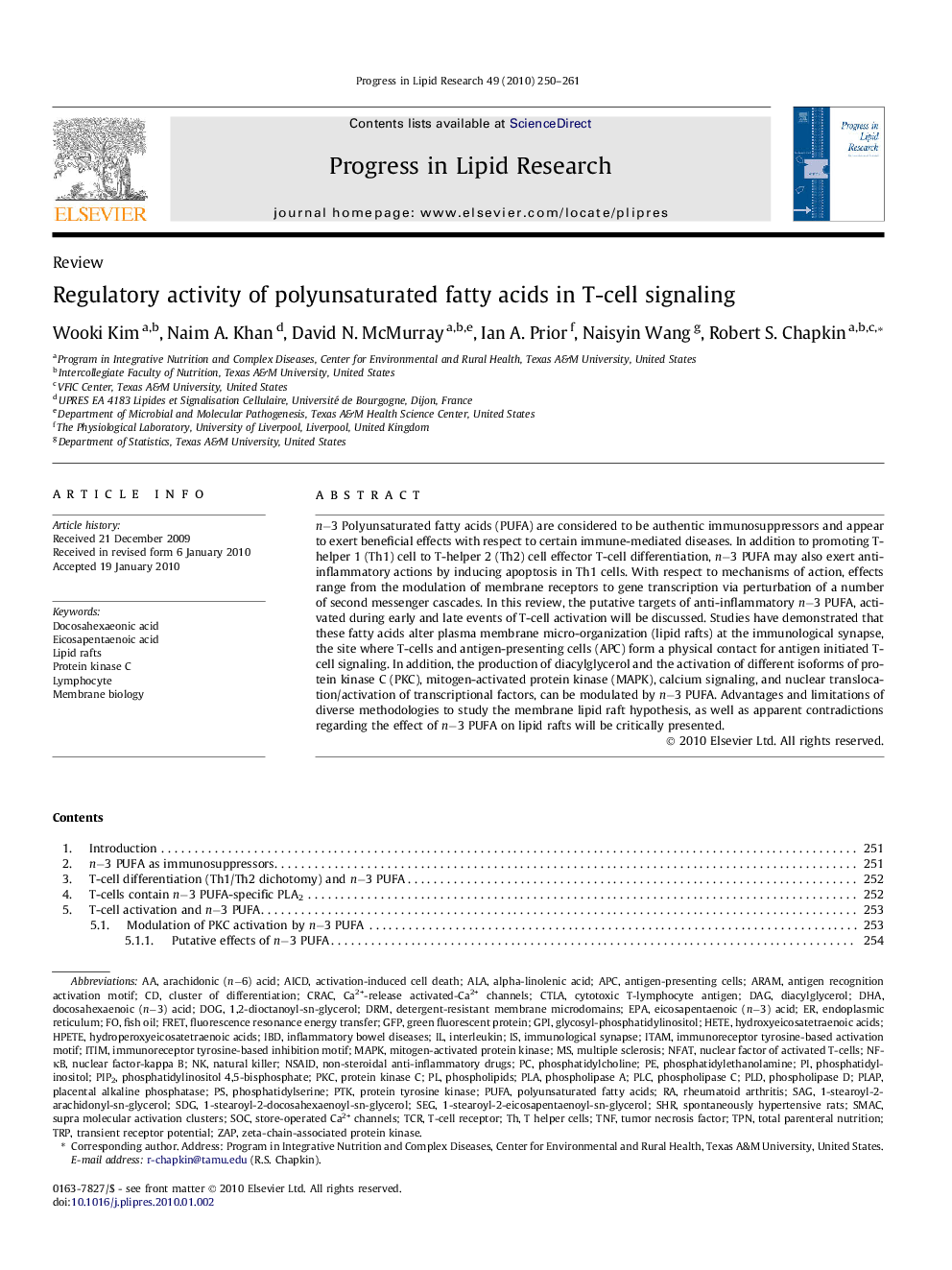| کد مقاله | کد نشریه | سال انتشار | مقاله انگلیسی | نسخه تمام متن |
|---|---|---|---|---|
| 2019267 | 1068570 | 2010 | 12 صفحه PDF | دانلود رایگان |

n−3 Polyunsaturated fatty acids (PUFA) are considered to be authentic immunosuppressors and appear to exert beneficial effects with respect to certain immune-mediated diseases. In addition to promoting T-helper 1 (Th1) cell to T-helper 2 (Th2) cell effector T-cell differentiation, n−3 PUFA may also exert anti-inflammatory actions by inducing apoptosis in Th1 cells. With respect to mechanisms of action, effects range from the modulation of membrane receptors to gene transcription via perturbation of a number of second messenger cascades. In this review, the putative targets of anti-inflammatory n−3 PUFA, activated during early and late events of T-cell activation will be discussed. Studies have demonstrated that these fatty acids alter plasma membrane micro-organization (lipid rafts) at the immunological synapse, the site where T-cells and antigen-presenting cells (APC) form a physical contact for antigen initiated T-cell signaling. In addition, the production of diacylglycerol and the activation of different isoforms of protein kinase C (PKC), mitogen-activated protein kinase (MAPK), calcium signaling, and nuclear translocation/activation of transcriptional factors, can be modulated by n−3 PUFA. Advantages and limitations of diverse methodologies to study the membrane lipid raft hypothesis, as well as apparent contradictions regarding the effect of n−3 PUFA on lipid rafts will be critically presented.
Journal: Progress in Lipid Research - Volume 49, Issue 3, July 2010, Pages 250–261